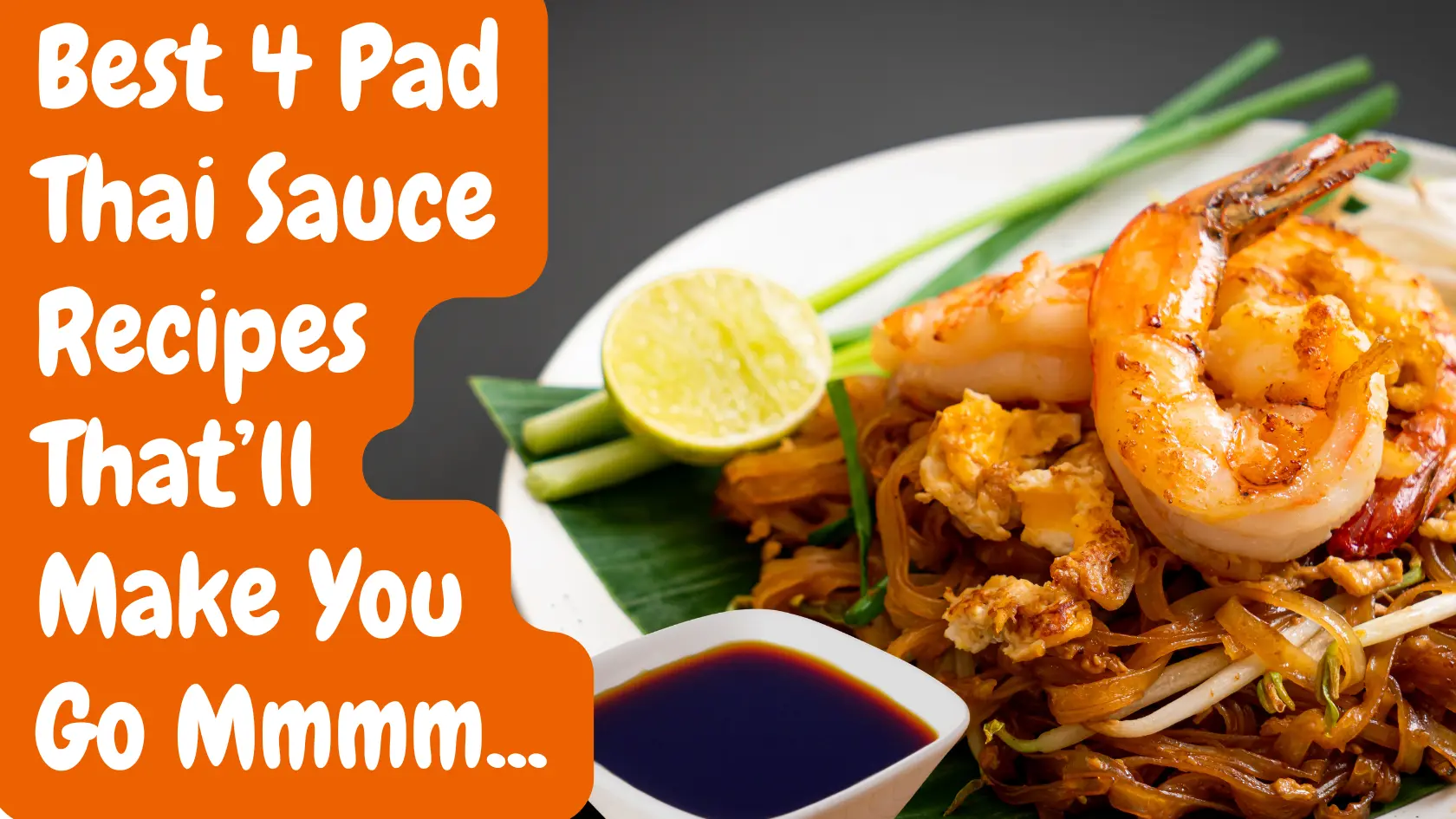Want something tasty and filling while you’re pregnant? There might be a Pad Thai sauce recipe that will make your taste buds happy. The sauce that goes with this popular Thai dish is what makes it stand out. It has a unique mix of salty, sweet, and sour tastes. In this post, we will explore how to make the perfect Pad Thai sauce recipe, with options for every taste and dietary need. Whether you’re craving a quick Pad Thai sauce recipe, a Pad Thai sauce recipe without tamarind, or an authentic Pad Thai sauce recipe, we’ve got you covered!
Table of Contents
- What is Pad Thai Sauce?
- Pad Thai Sauce Ingredients: What You’ll Need
- Easy Pad Thai Sauce Recipe
- Authentic Pad Thai Sauce Recipe
- Pad Thai Peanut Sauce Recipe
- Pad Thai Sauce Recipe Without Tamarind
- Balancing Pad Thai Sauce: The 1:1:1 Method with Basic Flavor Math
- Common Flavor Troubles and How to Fix Them
- What is Pad Thai Dressing?
- Homemade Pad Thai Sauce
- Store Bought Pad Thai Sauce Jar vs. Homemade
- FAQ: Pad Thai Sauce
What is Pad Thai Sauce?
Pad Thai sauce is used to season Pad Thai noodles. It is a tasty mix of things like tamarind, fish sauce, sugar, and lime. It’s the sauce that holds everything together and makes Pad Thai a favorite dish around the world. Its mix of salty, sweet, sour, and spicy flavors is what makes it so good.
Most of the time, sour tamarind paste, umami-rich fish sauce, sweet sugar, and acidic lime juice are mixed together to make Pad Thai sauce. You could also add peanut butter or ground peanuts to some recipes to make them taste richer.
Pad Thai Sauce Ingredients: What You’ll Need
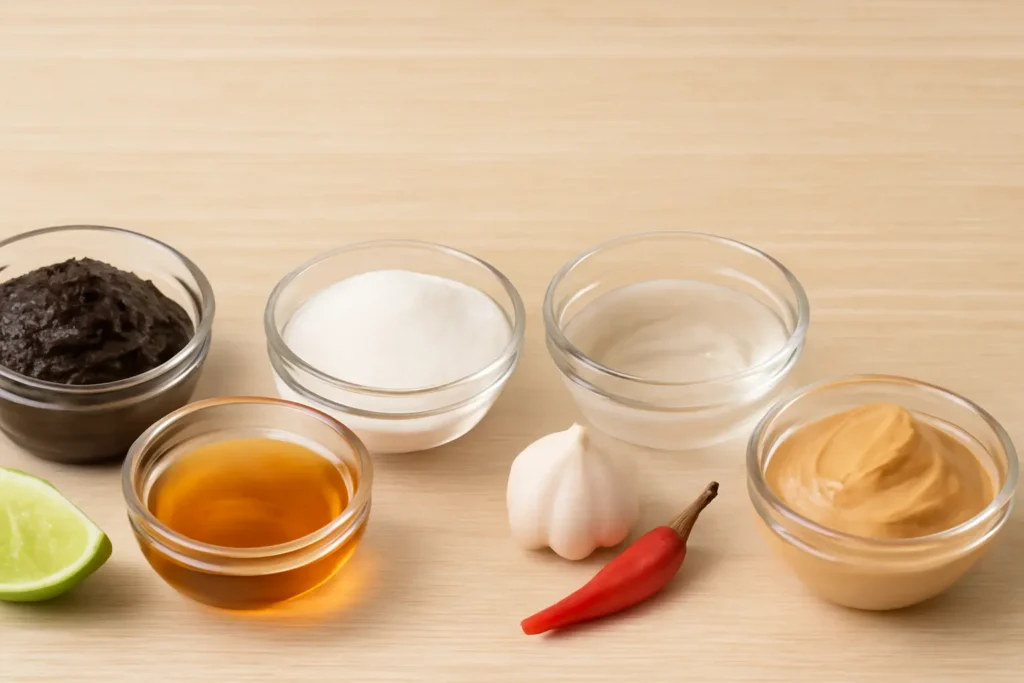
Before we look at the different methods, let’s look at what you need to make Pad Thai sauce:
Tamarind paste
The tanginess of this sauce comes from tamarind paste. This paste gives the sauce a sharp flavor that cuts through the sweetness and saltiness, giving it more depth and balance.
Fish sauce
Fish sauce is one of core ingredient in Pad Thai sauce recipe. Fish sauce is made from pickled fish and salt. It gives the Pad Thai sauce a salty, savory flavor and an umami boost. It’s an important part of Thai food because it gives the sauce a rich, savory flavor that ties all the other tastes together.
Sugar
Typically, palm sugar is used in traditional Pad Thai sauce recipes, though regular white sugar can be used as a substitute. The sugar makes the sauce taste better by adding a hint of sweetness that balances out the sourness of the tamarind and the saltiness of the fish sauce.
Lime juice
Lime juice adds a fresh, zesty acidity that brightens the flavor profile of the sauce. It also contributes to the sourness, complementing the tang of tamarind and offering a refreshing contrast to the salt and sweetness, giving the sauce its signature flavor.
Water
You can change the thickness of the Pad Thai sauce by adding water. It helps mix everything together, making the mixture smoother and more even. Water can help thin out the sauce without taking away from its taste.
Garlic and chili
Garlic gives the sauce a mild, fragrant, and tasty kick, while chili makes it hot. You don’t have to add either, but if you like your Pad Thai sauce more complicated and spicy, they can make it taste better. Change how much chili you use based on how hot you like it.
Peanut butter or ground peanuts
It is sometimes added to Pad Thai sauce, peanut butter or ground peanuts to make it creamier and fuller. This ingredient adds another layer of richness by giving the sauce a nutty taste and a smooth texture. It’s not required, but a lot of people add it to Pad Thai peanut sauce recipes because it makes the dish taste different.
With these basic ingredients, you’re ready to start experimenting with various versions of Pad Thai sauce recipes.
Easy Pad Thai Sauce Recipe
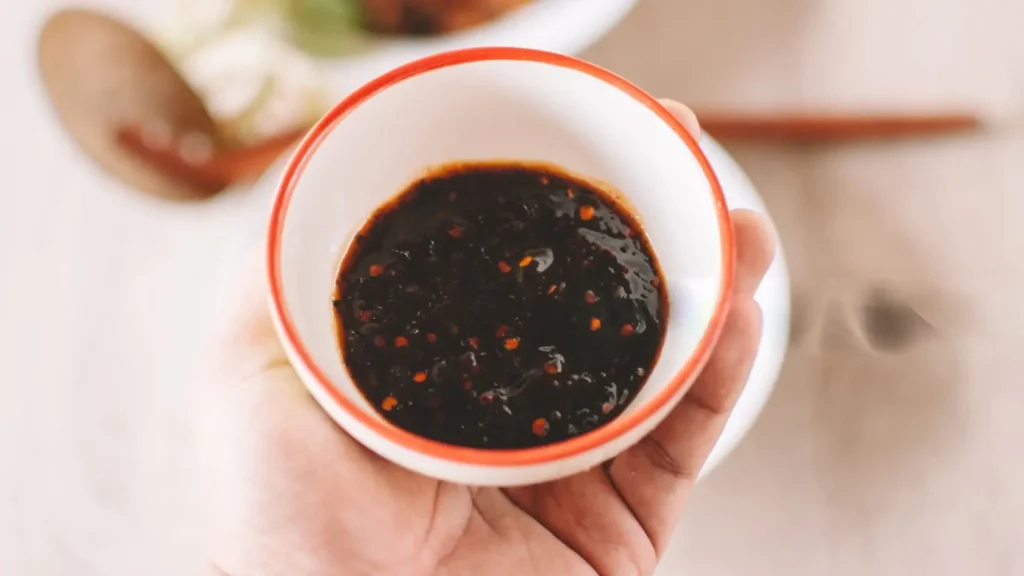
A simple Pad Thai sauce recipe can save the day on days when you want something quick and easy. It only takes a few simple items and less than 10 minutes to make this recipe.
Ingredients:
- 3 tablespoons tamarind paste
- 2 tablespoons fish sauce
- 2 tablespoons sugar
- 1 tablespoon lime juice
- 2 tablespoons water
Instructions:
- In a small saucepan, combine tamarind paste, fish sauce, sugar, and lime juice.
- Heat over medium heat and stir until the sugar has dissolved.
- Add water to adjust the sauce’s thickness, depending on your preference.
- Stir until well combined, and your easy Pad Thai sauce is ready!
Pro Tip: For added spice, you can add chili flakes or a small chopped chili.
Authentic Pad Thai Sauce Recipe
If you want something more traditional, this real Pad Thai sauce recipe will take you to Thailand, which has strong but well-balanced tastes.
Ingredients:
- 4 tablespoons tamarind paste
- 3 tablespoons fish sauce
- 1 tablespoon sugar (preferably palm sugar for authenticity)
- 2 tablespoons lime juice
- 1 tablespoon rice vinegar (optional, for extra acidity)
- 2 teaspoons chili paste (optional, for spice)
Instructions:
- In a saucepan, combine tamarind paste, fish sauce, sugar, lime juice, and rice vinegar.
- Bring to a simmer over medium heat, stirring occasionally until the sugar dissolves.
- Add chili paste if you want a spicy kick.
- Allow the sauce to cool and use it to toss your Pad Thai noodles.
This real Pad Thai sauce recipe has the right amount of sweet, sour, salty, and spicy. It’s a must-have in any Thai kitchen.
Pad Thai Peanut Sauce Recipe
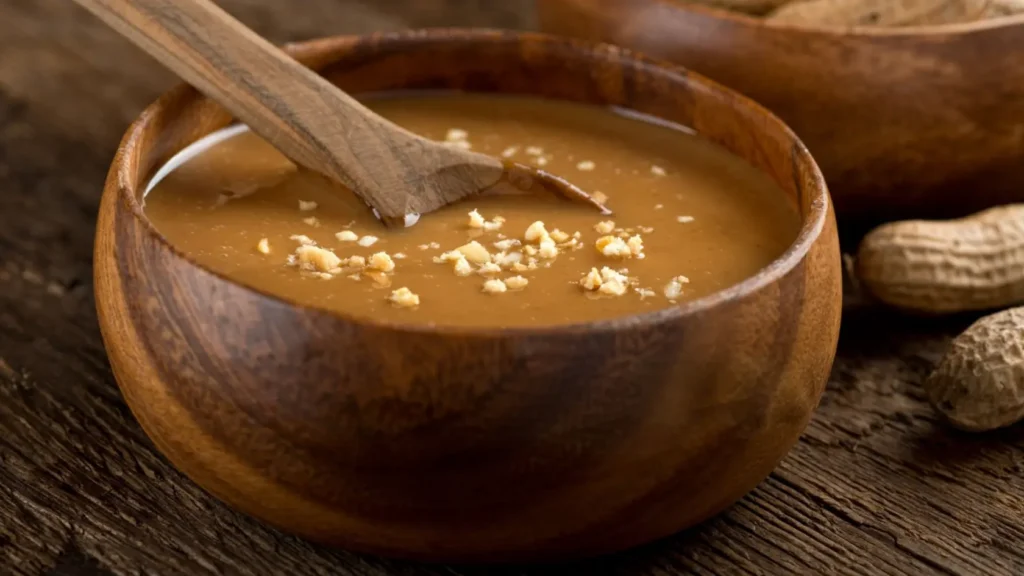
For a different take on Pad Thai, try a recipe for Pad Thai peanut sauce. This version has peanut butter added to it, which makes the sauce creamy and nutty. It goes well with the noodles and veggies.
Ingredients:
- 3 tablespoons peanut butter
- 2 tablespoons soy sauce (or fish sauce)
- 1 tablespoon honey or sugar
- 1 tablespoon lime juice
- 1 teaspoon chili paste
- Water to thin the sauce
Instructions:
- In a bowl, whisk together the peanut butter, soy sauce, honey, lime juice, and chili paste.
- Gradually add water until the sauce reaches your desired consistency.
- Toss with cooked Pad Thai noodles for a creamy, peanut-flavored dish.
This Pad Thai peanut sauce recipe is perfect for those who love a richer, nuttier taste.
Pad Thai Sauce Recipe Without Tamarind
Don’t worry if you can’t find tamarind or would rather not use it. It’s still possible to make a tasty Pad Thai sauce. Here is a recipe for Pad Thai sauce that doesn’t use tamarind but does use other items that have a similar tang.
Ingredients:
- 2 tablespoons lime juice
- 3 tablespoons rice vinegar
- 2 tablespoons soy sauce (or fish sauce for authenticity)
- 2 tablespoons sugar
- 1 teaspoon chili paste (optional)
Instructions:
- In a bowl, combine lime juice, rice vinegar, soy sauce, sugar, and chili paste.
- Stir until the sugar dissolves, and you have a smooth, flavorful sauce.
- Adjust the flavors to your taste by adding more lime for tanginess or more sugar for sweetness.
People who don’t want to use tamarind in their Pad Thai sauce can use this recipe instead. It still makes the dish taste great.
Balancing Pad Thai Sauce: The 1:1:1 Method with Basic Flavor Math
To make the best Pad Thai sauce, you need to find the right balance of four flavors: hot, sweet, sour, and salty. The trick is to get these parts to work well together so that the noodles and other food in the dish taste better. Using the 1:1:1 method along with the basic flavor math of Pad Thai sauce is one way to get this mix right. To make a sauce that hits all the right notes, this method makes sure that each of the main flavors is present in similar amounts.
Common Flavor Troubles and How to Fix Them
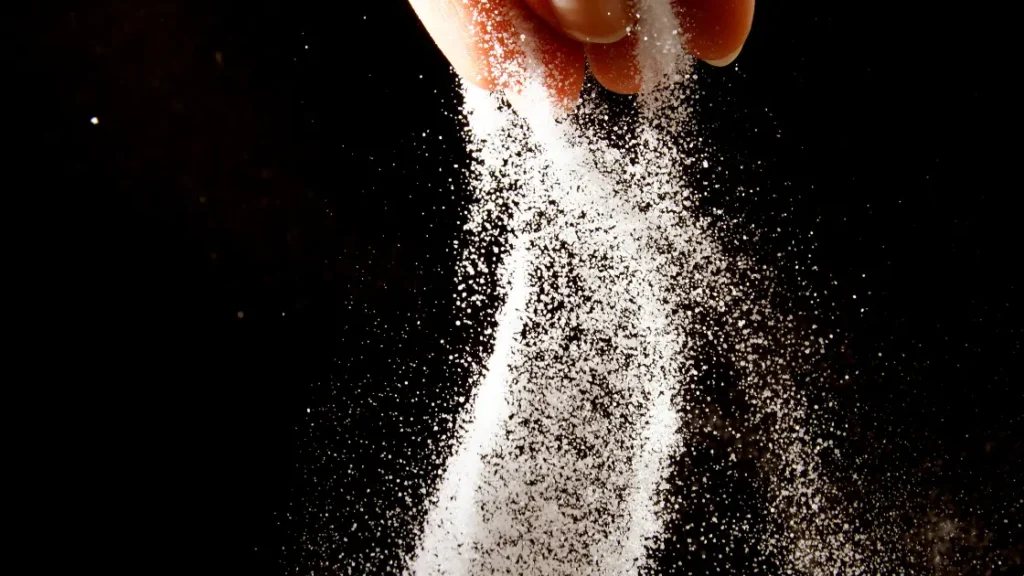
Too Sour
It’s possible that you put too much lime juice or tamarind paste if your Pad Thai sauce tastes too sour. If you want to make it more balanced, add a little more sugar or fish sauce. If you don’t want to add more sugar but think it’s too sour, a pinch of salt can help smooth it out.
Too Sweet
If your sauce is too sweet, the other tastes might not stand out as much. Adding a little more lime juice or tamarind paste will make it less sweet. On the other hand, a splash of rice vinegar can make it less sweet by adding acidity.
Too Salty
It’s easy to add too much fish sauce because it can be spicy. To make the sauce taste better, add a little more sugar or lime juice if it’s too salty. Add a little water to make it less salty if it’s still too salty. To prevent this problem in the future, you can also use soy sauce or fish sauce with less salt.
Too Spicy
Chili paste or fresh peppers can make pad Thai sauce too hot, but the sauce should still be mild. If your sauce is too hot, add a little more sugar to make it less spicy. You can also lessen the heat by adding a little water or lime juice, or you can add some peanut butter for a creamy taste that does the same thing.
Flat or Bland Flavor
If your sauce tastes flat or doesn’t pop, it’s likely lacking acidity or salt. Add a bit more lime juice or tamarind for brightness, and taste the sauce again. You can also adjust the fish sauce for more umami or add a touch more sugar to round out the flavor.
What is Pad Thai Dressing?
Pad Thai sauce is the main ingredient in the popular Thai stir-fried noodles. Pad Thai dressing is a lighter version of this sauce that is often used on other foods. It can be used to marinate salads or rice bowls, especially if the person wants to get the taste of Pad Thai without making the dish too heavy. Pad Thai dressing often shares many of the same core ingredients—fish sauce, lime juice, sugar, and tamarind—but the main difference is its consistency.
Unlike the thicker Pad Thai sauce used in stir-fried noodles, Pad Thai dressing is thinner, which makes it perfect for drizzling over cold dishes like salads, or as a dipping sauce for appetizers. It gives a refreshing flavor boost to those dishes without overwhelming them, offering that same sweet, sour, salty, and tangy balance. You can adjust its thickness by adding more water or lime juice to create the desired texture.
Homemade Pad Thai Sauce
It’s simple and fun to make your own Pad Thai sauce, and you can get the exact flavor mix you want. When you make it yourself, you don’t have to use the additives and preservatives that are often in store-bought forms. Plus, you can tweak the sauce to your personal taste by adjusting the levels of sweetness, sourness, saltiness, or spice.
To make homemade Pad Thai sauce, simply combine core ingredients like tamarind paste, fish sauce, sugar, and lime juice. You can also experiment with extra ingredients such as peanut butter, chili paste, or garlic, depending on your preferences. The best part about making your own is that you get to create a sauce that’s fresh, flavorful, and free from unnecessary chemicals.
Mixing these ingredients together results in a sauce that’s versatile and perfect for your stir-fried noodles or any other Thai-inspired dishes.
Store Bought Pad Thai Sauce Jar vs. Homemade
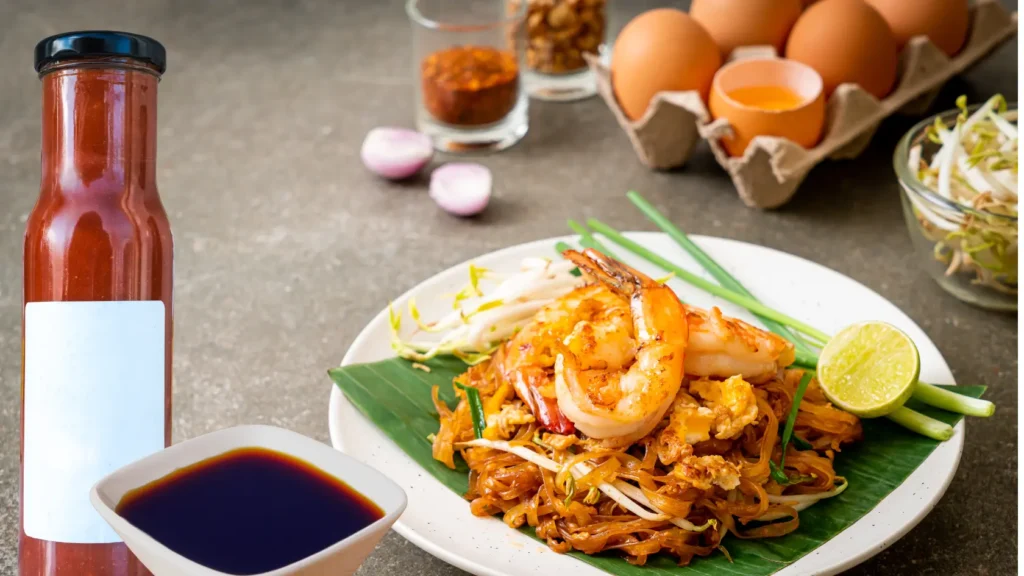
There are a few main changes between Pad Thai sauce from a store bought jar and the sauce you make yourself. For people who need a quick meal or don’t have time to make the sauce from scratch, jarred Pad Thai recipes are nice. They do, however, often have extra salt or sugar, fake flavors, and preservatives that might not suit everyone’s taste or diet.
Making your own Pad Thai sauce, on the other hand, lets you make a taste that is fresher and more unique. You can choose how sweet, sour, or salty something is and leave out any additives you don’t want. Because you made it yourself, you didn’t use any prepared foods, so the food was as fresh and healthy as it could be. You can make the sauce taste exactly the way you like it and change it to fit different diets, such as gluten-free, vegetarian, or low-sugar choices. It’s also a fun and satisfying process!
FAQ: Pad Thai Sauce
What is Pad Thai sauce made of?
Tamarind paste, fish sauce, lime juice, sugar, and sometimes chili paste or peanut butter are used to make pad Thai sauce.
Can I make Pad Thai sauce without tamarind?
Yes! You can substitute tamarind with lime juice, rice vinegar, or other tangy ingredients.
How can I make Pad Thai sauce spicy?
Add chili paste, fresh chili, or chili flakes to the sauce for an extra kick of spice.
What can I substitute for fish sauce?
If you prefer a vegetarian option, soy sauce or coconut aminos can replace fish sauce in your Pad Thai sauce recipe.
Can I store homemade Pad Thai sauce?
Yes! Store it in an airtight container in the fridge for up to a week.
By now, you should have everything you need to make the perfect Pad Thai sauce whether you’re craving a classic version, a Pad Thai sauce recipe without tamarind, or a Pad Thai peanut sauce recipe. Satisfy your pregnancy cravings with this easy-to-make, flavorful dish, and enjoy the balance of sweet, sour, salty, and spicy flavors that make Pad Thai a worldwide favorite!
Explore more on Pregnancy Must –
